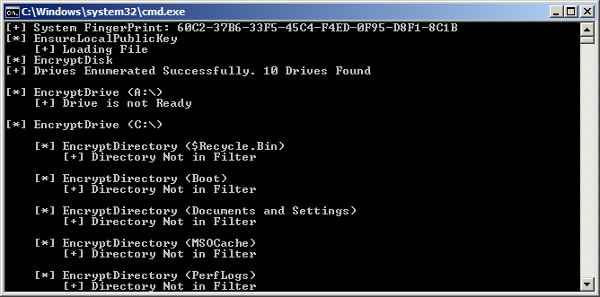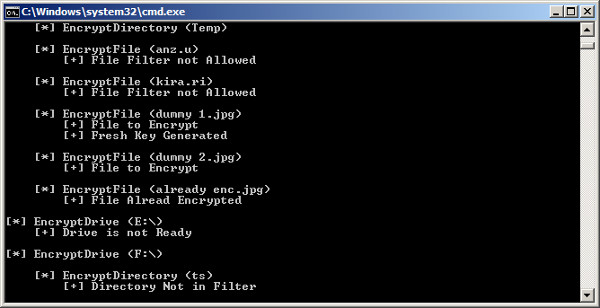Ransom_NXCRYP.A
MSIL/Filecoder.CY!tr (Fortinet); a variant of MSIL/Filecoder.CY trojan (NOD32)
Windows


Threat Type: Ransomware
Destructiveness: No
Encrypted: No
In the wild: Yes
OVERVIEW
Dropped by other malware, Downloaded from the Internet
This Ransomware arrives on a system as a file dropped by other malware or as a file downloaded unknowingly by users when visiting malicious sites.
TECHNICAL DETAILS
54,784 bytes
EXE
No
30 Mar 2017
Drops files, Encrypts files
Arrival Details
This Ransomware arrives on a system as a file dropped by other malware or as a file downloaded unknowingly by users when visiting malicious sites.
Dropping Routine
This Ransomware drops the following files:
- {malware path}\master_pri_key.info - private RSA key
- {malware path}\master_public_key.info - public RSA key
Other Details
This Ransomware encrypts files with the following extensions:
- .AVI
- .C
- .CLASS
- .CONFIG
- .CPP
- .CS
- .CSC
- .DBX
- .DOC
- .DOCX
- .EML
- .GIF
- .GZ
- .H
- .JAVA
- .JPG
- .JS
- .JSON
- .JSP
- .MBX
- .MP3
- .MP4
- .MPEG
- .MSG
- .NEF
- .PHP
- .PNG
- .PPT
- .PPTX
- .PST
- .PY
- .R
- .RAR
- .TAR
- .TXT
- .VB
- .VBS
- .WAB
- .XAML
- .XLS
- .XLSX
- .ZIP
It does the following:
- It targets files to encrypt in the following directory:
D:\TEMP
NOTES:
It displays a console to show the status of encryption or decryption.


For decryption, it checks for “--decrypt” argument.

SOLUTION
9.850
13.310.01
30 Mar 2017
13.311.00
31 Mar 2017
Step 1
Before doing any scans, Windows XP, Windows Vista, and Windows 7 users must disable System Restore to allow full scanning of their computers.
Step 2
Note that not all files, folders, and registry keys and entries are installed on your computer during this malware's/spyware's/grayware's execution. This may be due to incomplete installation or other operating system conditions. If you do not find the same files/folders/registry information, please proceed to the next step.
Step 3
Search and delete this file
- {malware path}\master_pri_key.info
- {malware path}\master_public_key.info
Step 4
Scan your computer with your Trend Micro product to delete files detected as Ransom_NXCRYP.A. If the detected files have already been cleaned, deleted, or quarantined by your Trend Micro product, no further step is required. You may opt to simply delete the quarantined files. Please check this Knowledge Base page for more information.
Step 5
Restore encrypted files from backup.
Did this description help? Tell us how we did.

